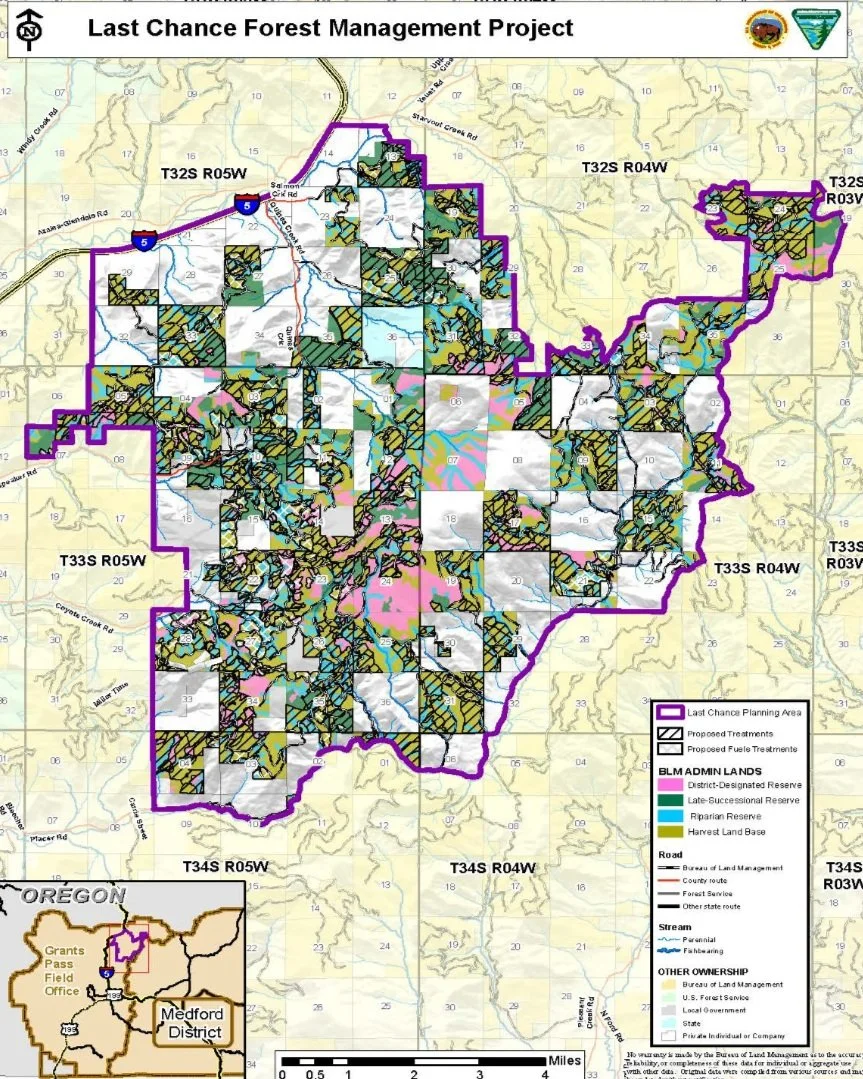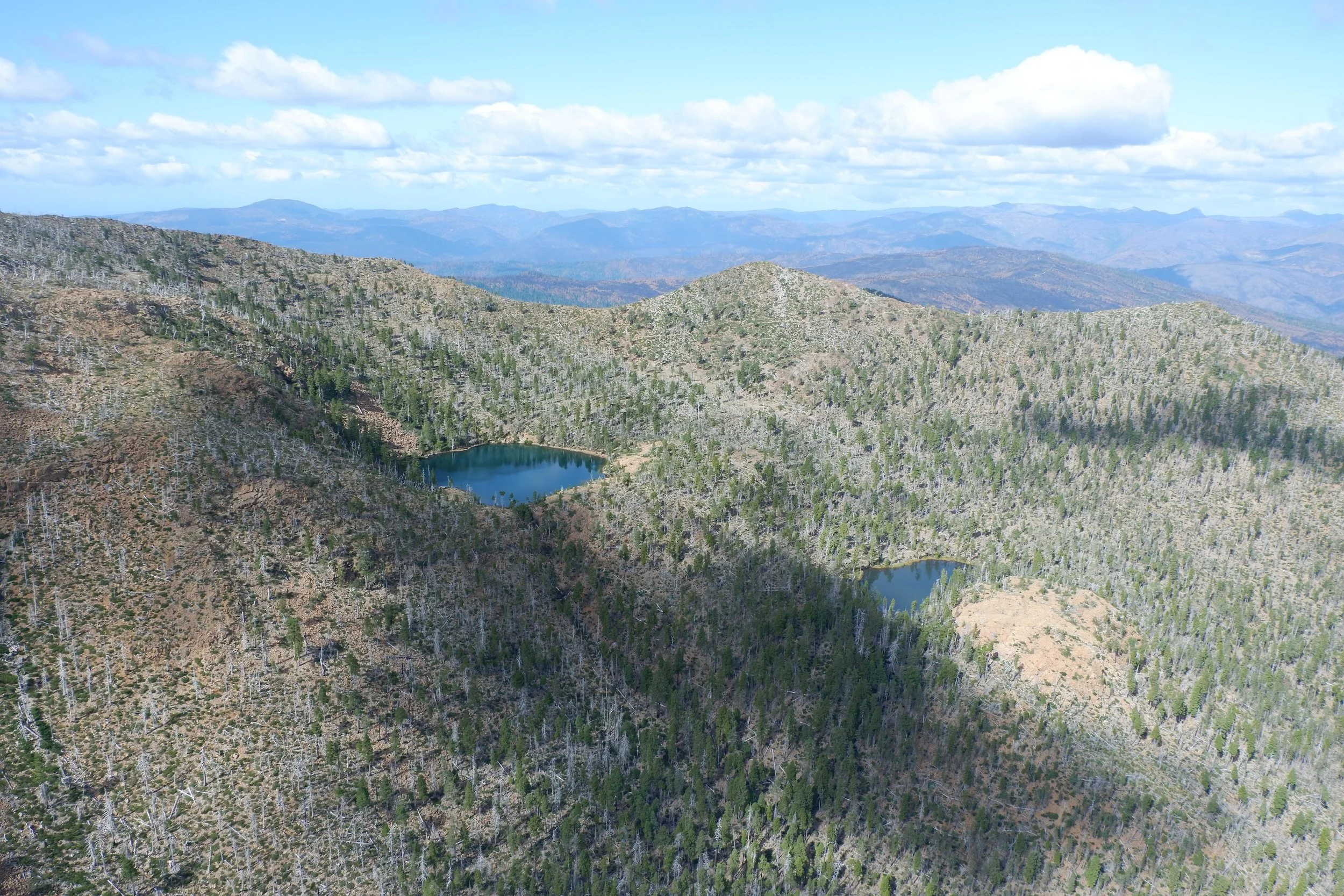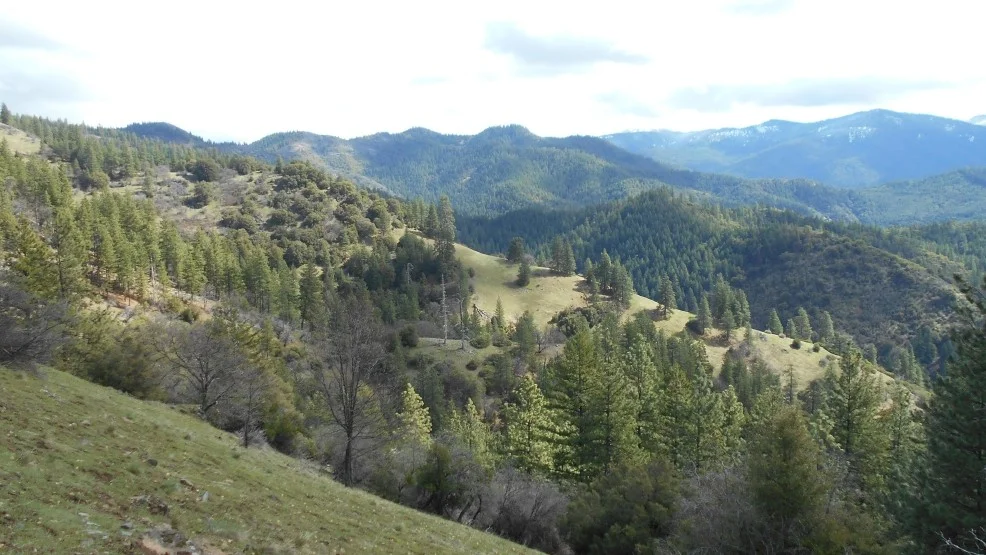Federal agencies such as the Forest Service and the Bureau of Land Management are legally required to consider public opinion. When you or your community join the decision-making process through contributing substantive public comments, you have the opportunity to influence the actions of the agency involved. Learn how to make comments on federal projects in this blog.
Read MoreWe are so wild about the Siskiyou Mountains salamander, it is the KS Wild mascot! We continue to advocate on behalf of this species that is only found in the Klamath-Siskiyou region. Learn more about our efforts to protect this species through advocacy that dates back over two decades here.
Read MoreCheck out the Medford BLM's latest old-growth timber sale called "Last Chance" and read KS Wild's "scoping" comments in this blog.
Read MoreSome timber advocates within the Bureau of Land Management (BLM) simply cannot abide the idea that there are old-growth forests designated as protected on public lands, so they’ve designed a new program called “Integrated Vegetation Management” to target Late Successional Reserves for logging. Learn more about the IVM project in this blog.
Read MoreThe Illinois Valley and the Wild Rivers Ranger District are at the very heart of KS Wild’s mission to protect wildlands, wildlife and watersheds. From botany to mining to logging, read about KS Wild’s recent conservation efforts in the Illinois Valley.
Read MoreThe Forest Service is currently in the beginning phases of updating the Northwest Forest Plan, the first large-scale, bioregional forest plan incorporating conservation biology. We will be working with partners to ensure an updated plan reflects the current issues our forests face in the era of climate change. Read our Climate Program’s latest blog post about these critically important NFP updates.
Read MoreThe Bear Grub timber sale is back, and rather than working with the public to reduce the impacts of the proposed "group selection" logging on wildlife, watersheds and wildlands, the BLM is once again targeting ancient forests in the "harvest land base" for "group selection. Take action today to let the BLM know you oppose the Bear Grub timber sale!
Read MoreThis October, KS Wild hosted our first ever Forest Defender Training Series to help community members learn how to advocate for our forests and take action to protect them through writing letters, LTEs, taking action on social media, and more.
Read MoreAlmost six years ago the timber industry challenged President Obama’s expansion of the Cascade-Siskiyou National Monument. The legality of that expansion is in the midst of litigation right now. Read the blog to get the full scoop.
Read MorePrescribed fire can have many benefits. It can reduce fine fuels, brush and small trees and reduce subsequent fire severity. It can help forests become more resilient in the face of climate change. Read more about prescribed fire policy at this KS Wild Blog Post .
Read MoreKS Wild and our allies recently challenged the BLM’s (now withdrawn) Lost Antelope timber sale. This timber sale would have contributed to increased fire hazard near or within the WUI through regeneration harvest in an area where many untreated slash piles remain from a previous timber sale.
Read More"Integrated Vegetation Management for Resilient Lands" (IVM) sure sounds great doesn't it? Unfortunately, those flowery words are agency-speak for logging old-growth forest reserves down to 30% canopy cover and creating four-acre mini-clearcuts across the landscape in southwestern Oregon.
Read MoreSenator Wyden learned from the crowd at his Josephine County Town Hall that protecting the Rogue, its tributaries, and all of the wild places in Oregon, is of utmost importance to Oregonians. He also heard that his constituents here in southern Oregon see and appreciate the hard work he is doing in the nation’s capital to keep our lands and rivers pristine and protected.
Read MoreWith the passage of a public lands bill, Oregon will build on its Wild & Scenic River legacy and KS Wild will achieve some long sought after conservation measures. The Oregon Wildlands Act adds 250 miles of new rivers and streams to the National Wild & Scenic River system, protecting southern Oregon streams from mining!
Read MoreThe U.S. Senate passed the Natural Resources Management Act (S. 47), including the Oregon Wildlands Act (S. 1548), the Frank and Jeanne Moore Wild Steelhead Act (S. 513/H.R. 1308), and the reauthorization of the Land and Water Conservation Fund,. The package now heads to the U.S. House where we are hopeful it will pass and be signed into law.
Read MoreThe Klamath National Forest intends to remove 200-400 year-old trees and snags from the landscape to make room for dense timber plantations that offer sparse value to the forest ecology.
Read MoreWhat have we learned since the 2002 Biscuit fire aftermath, and how will it affect land management decisions in the post-Chetco Bar burn area of southwest Oregon?
...with the passage of time it is now possible to look back more objectively at Biscuit fire and the political firestorm that followed in its wake.
Read MoreA forest after fire is not a tragedy; it’s simply a stage in the life of the forest. Post-fire logging is often framed as focused on fire prevention. In reality, important biological characteristics are removed from post-fire forests. Because of this, salvage logging acts as an unnatural human disturbance to the sensitive post fire landscape.
Read MoreFire is so important to the world-renown forest diversity of the Klamath-Siskiyou that it is recognized as the keystone ecological process. Here in the KS, forests with fire are healthy forests!
Read More
Looking for an early spring antidote to cabin fever? The Little Grayback Mountain trail may be just the ticket.
Read More



















